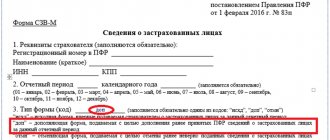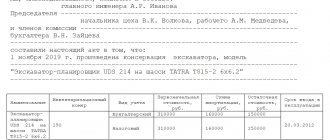Legislative abolition of seals
The mandatory use of seals when preparing documents at the legislative level was abolished on April 7, 2015, when Federal Law No. 82-FZ of April 6, 2015 came into force. He amended the Federal Law of December 26, 1995 No. 208-FZ “On Joint-Stock Companies” and the Federal Law of February 8, 1998 No. 14-FZ “On Limited Liability Companies.”
The Federal Tax Service reminded that LLCs and JSCs are not required to have a seal
In accordance with the amendments, LLCs and JSCs were released from the obligation to use seals when documenting their actions and operations. At the same time, they retained the right to have seals, stamps and forms with their name, their own emblem, as well as a duly registered trademark and other means of individualization.
Thus, the use of seals was transformed from an obligation into the right of organizations. At the same time, the law itself on the abolition of seals still stipulated a number of cases in which organizations are obliged to use them:
- if the mandatory use of the seal is provided for by the organization’s charter;
- if the company's obligation to use the seal is provided for by separate laws.
Having taken these norms into account, a number of organizations made the necessary changes to their charters, stipulating in them the obligation to use seals. Others continued to work as before, using seals in place and in place for any reason. All these circumstances have led to the fact that seals are used by some organizations and individual entrepreneurs even now, in the era of the widespread introduction of EDI and the general transition to electronic digital signatures.
Related documents
- Sample. List of documents not subject to registration
- Sample. List of documents subject to approval
- Sample. Agenda of the annual general meeting of shareholders
- Sample. Regulations on confidential information of a joint stock company (standard form)
- Sample. Regulations on the procedure for the withdrawal of a participant from a limited liability partnership
- Sample. Regulations on the procedure for determining the market value of the property of a joint-stock company (standard form)
- Sample. Regulations on the procedure for the development and adoption of local regulations in a joint-stock company (standard form)
- Sample. Regulations on the procedure for the sale by participants of their shares in the authorized capital of a limited liability partnership
- Sample. Regulations on the procedure for convening and holding a general meeting of shareholders of a closed joint stock company
- Sample. Regulations on the procedure for convening and holding a general meeting of participants in a limited liability partnership
- Sample. Regulations on the distribution (use) of profits of a joint-stock company (standard form)
- Sample. Regulations on the distribution of profits received by a joint-stock company (standard form)
- Sample. Regulations on transactions related to the acquisition or alienation of property by a joint-stock company (standard form)
- Sample. Regulations on social protection of employees of a joint-stock company (standard form)
- Sample. Procedure for conducting the annual general meeting of shareholders of an open joint-stock company
- Sample. Order (instruction) of the general director of a joint-stock company (to the regulation on the status of the general director of a joint-stock company) (standard form)
- Sample. Order of the General Director on measures to create a branch (representative office) of a joint-stock company (appendix to the regulations on the procedure for creating, reorganizing and liquidating branches and representative offices of a joint-stock company) (types
- Sample. Order of the General Director on approval of the regulations on the branch (representative office) of the joint-stock company (appendix to the regulations on the procedure for creating, reorganizing and liquidating branches and representative offices of the joint-stock company) (types
- Sample. Order on amendments to the staffing table of the enterprise
- Sample. Order on the opening and procedure for maintaining the register of shareholders (to the regulation on the register of shareholders and the procedure for maintaining it) (standard form)
Is stamping required on documents?
According to the existing rules, organizations are indeed obliged to use seals in cases where their use is provided for by the relevant special law (clause 5, article 2 of the Federal Law of 02/08/1998 No. 14-FZ and clause 7 of article 2 of the Federal Law of December 26, 1995 No. 208-FZ). This rule has been in effect since 2015.
At the same time, from this moment on, all legislative acts that previously required the use of seals included a clause according to which seals are used only if they are available.
For example, now Art. 18 of the Federal Law of July 13, 2015 No. 218-FZ “On State Registration of Real Estate” states: “copies of constituent documents must be certified by the seal of a legal entity (if any)”
.
When documents for court need not be stamped
A similar clause has been added to other federal laws that in one way or another refer to the press of organizations.
That is, the organization itself decides whether to use the seal or not. If an organization does not have a seal and its use is not specified in the charter, the seal is not affixed to the documents.
The same applies to tax reporting. All tax reporting submitted electronically is issued with electronic digital signatures. There are no stamps placed on it.
The same organizations and individual entrepreneurs that report on printed forms may also not use stamps in tax reporting, since the Tax Code of the Russian Federation does not establish relevant requirements. In any case, tax authorities will accept reporting if it is submitted in the prescribed form and contains all the necessary signatures.
Do I need a seal in the primary?
The list of mandatory details of primary documents is given in Art. 9 of the Federal Law of December 6, 2011 No. 402-FZ “On Accounting”. The primary document must necessarily indicate its name, date of preparation, name of the compiler, content of the fact of economic life, etc.
In addition, primary documents must contain the signatures of responsible persons indicating their last names and initials or other details necessary to identify these persons.
The organization's seal is not included in the required details of the primary document.
Consequently, its absence does not affect the legal validity of the document and does not interfere with confirmation of the fact of the business transaction.
Is a seal required in contracts?
Stamping is also not required in civil contracts. The fact is that, in accordance with Art. 160 of the Civil Code of the Russian Federation, a transaction in writing must be completed by drawing up a document expressing its content and signed by the person or persons making the transaction.
The written form is also considered to be complied with if a person makes a transaction using electronic technical means. The requirement for a signature is considered fulfilled if any method is used that allows one to reliably identify the person who expressed the will. Including an electronic signature.
Sealing a transaction is just an additional requirement for its form, the binding nature of which can only be established by agreement of the parties (paragraph 3, paragraph 1, article 160 of the Civil Code of the Russian Federation).
If the parties to the contract do not agree on the use of a seal before its conclusion, then it is not necessary to use it. Therefore, the absence of a seal in the agreement does not detract from its legal force and is not a basis for recognizing the transaction as not concluded (see, for example, the resolution of the Moscow District Arbitration Court dated March 18, 2015 No. A40-26749/13). The fact that a seal is not a mandatory requisite of a contract and may not be affixed at all when making transactions was recognized by the Supreme Court even before the legislative abolition of the obligation to use seals (see, for example, the ruling of the Supreme Court of the Russian Federation dated October 27, 2014 No. 308-ES14-1964) .
Survey
Printing in the organization
- Does your organization (IP) have a seal?
Yes, we have a seal and we use it all the time. 238 (87.18%) No, our organization does not have a seal. 17 (6.23%) Yes, there is a seal, but we use it less and less. 12 (4.40%) We do not have a seal, but sometimes they require one from us. 6 (2.20%)
Thank you for participating in the survey! Every opinion is very important to us!
The signatures of which officials should be certified with which seal?
The signature and seal (as well as the document approval stamp) are the main details related to the composition of the document’s certification, i.e. ensure its legal force
. The seal impression actually certifies the authenticity of the signature of an official of the organization (one who has the right to carry out organizational, administrative, financial and economic activities on behalf of a legal entity). The seal is affixed on documents certifying the rights of persons, recording the facts of receipt or expenditure of financial and material resources, as well as on other documents in cases where legislative or other regulatory legal acts establish the obligation to affix a seal.
Technically, the seal impression is affixed in a text-free space at the level of the job title of the person who signed the document, partially covering it. Currently, it is not recommended to capture part of the personal signature (personal stroke) of an official with a seal impression. But the legal meaning of affixing a seal remains the same: the official whose personal stroke (signature) is written on this document actually occupies this position in the organization whose name is carved on the seal and has the right to sign this document
. In some cases, a special area is allocated for affixing a seal on a sheet of paper, which is designated as “MP” (“print place”).
“Best practices” of organizations recommend developing a separate regulation on seals and stamps, which should establish the types of seals used, the procedure for their recording, issuance, etc. The organization has one “main” seal
and may have
special purpose seals
:
- seals of structural units
indicating their names, including branches and remote structural units; - seals indicating the specific purpose of their use
to certify signatures (“For contracts”; “For contracts of paid services, etc.). Sometimes its number is indicated on the seal, for example, “For contracts No. 3,” if three seals were made to certify contracts that are used in three structural divisions, the officials of which, on the basis of powers of attorney, have the right to conclude contracts of a specific type on behalf of the entire legal entity.
As an annex to the regulations on seals and stamps
, or better yet, as
an independent classifier
, subject to approval by order of the first head of the organization, it is recommended to develop
a list of documents that are subject to certification by the organization’s seal (the “main” or main seal)
. This list (classifier) usually includes:
- acts on the execution of contracts (handover and acceptance of work; provision of services);
- powers of attorney (general, special and one-time, so-called “accounting” for the receipt of inventory items);
- contracts (almost all main types - labor, financial liability, rent, work, etc. An exception may be client contracts for the provision of services to a wide range of consumers, which are concluded within the framework of the regulations for the provision of certain consumer services and are of a mass nature) ;
- assignments (technical);
- applications for participation in competitions and tenders;
- travel certificates;
- consumption standards for fuel and fuels and lubricants, which are approved by orders of the head of the organization;
- card of sample signatures and seal impressions;
- submissions and petitions to higher organizations, authorized state bodies and local government bodies;
- letters of guarantee;
- orders (primarily payment orders);
- regulations on branches and representative offices;
- regulations on structural divisions;
- protocols of disagreements (during the execution of contracts);
- cost estimates;
- certificates of personnel (about place of work, salary, income form 2-NDFL);
- product specifications;
- tariffs for services provided;
- constituent documents, charters and amendments to them;
- staffing schedules.
The development of a specific list (classifier) is important in connection with the regulation of the use of types of electronic signatures in an organization, because An enhanced qualified signature also replaces the imprint of the “main” (main) seal.
Please note that we are talking about certifying types of documents with a seal imprint, i.e. a seal is placed on a document created by a legal entity. But the question of which official has the right to sign these types of documents is resolved by delegation of authority
. It is recorded in:
- the charter of the organization: it establishes the fact that the organization has a seal depicting its name and (or) other details that are specifically listed;
- an order on the distribution of powers (responsibilities) between the management (managers) of the organization, in which, at the very first level, the authority to sign certain documents is established and delegated to the first head of the organization and his deputies;
- regulations on the system of delegation of powers, which develops and lists in detail the issues that are in the areas of responsibility of the manager, his deputies, the chief accountant and other “main” specialists (for example, the head of the control department, who is the “chief controller”, responsible for working with requests citizens, for claims work with clients, etc.) indicating the types of documents on each issue, the right to sign which is delegated to the corresponding deputy or employee;
- regulations on structural divisions, subject to the delegation of authority to sign documents to the heads of these divisions;
- regulations on positions, official job regulations or job descriptions, which also establish delegated rights to sign documents;
- specific regulations, instructions and other technological and other documents. They establish processes, types and varieties of documents that provide specific processes, rights to sign these documents and certify them with seals of a certain type; It is at this level that specific regulation of the use of special-purpose seals is carried out
; - powers of attorney, which confirm (transfer to the attorney) the rights to sign documents (for example, according to the new Federal Law “On Accounting” No. 402-FZ, a manager can delegate the right to sign accounting (financial) statements to the chief accountant of the organization).









